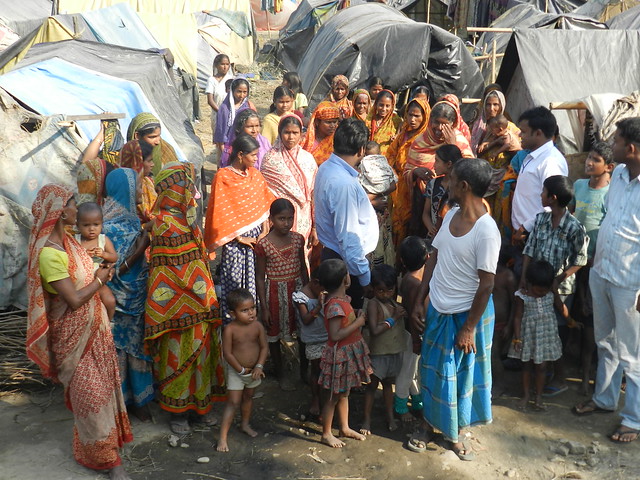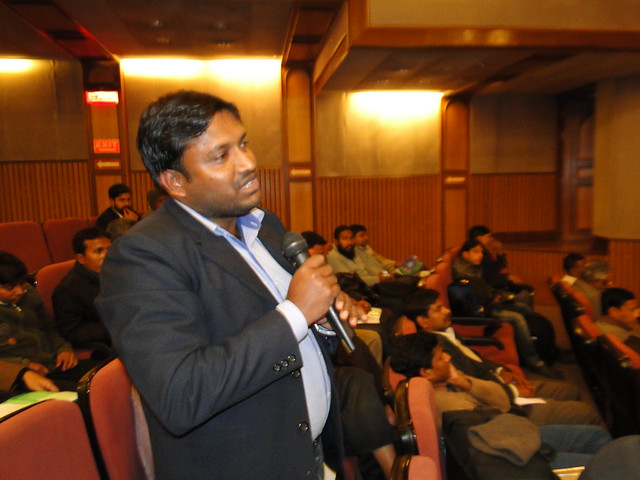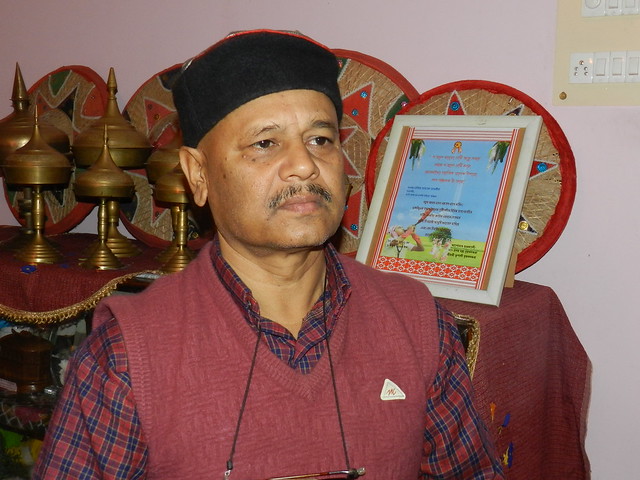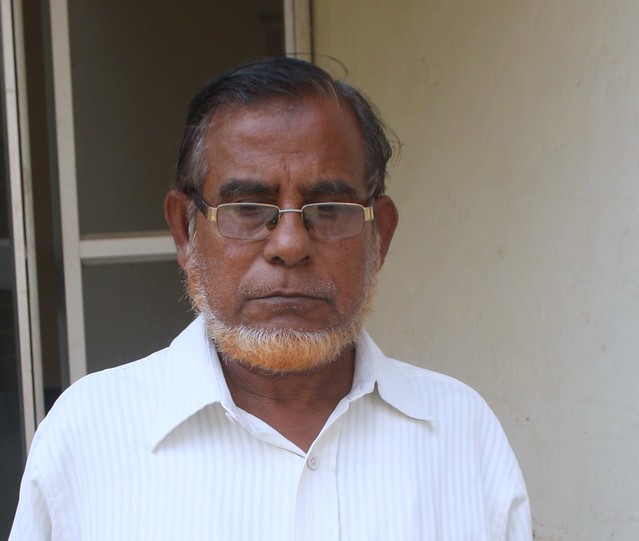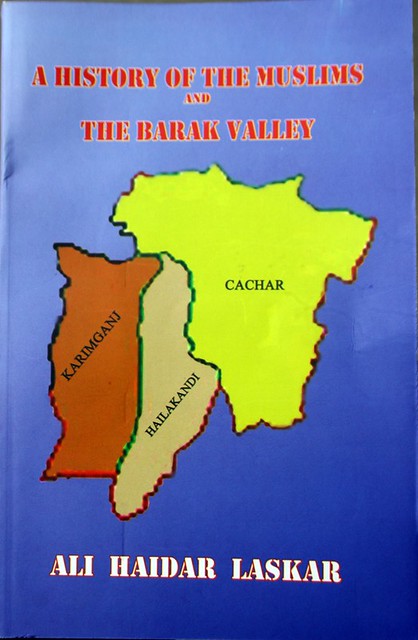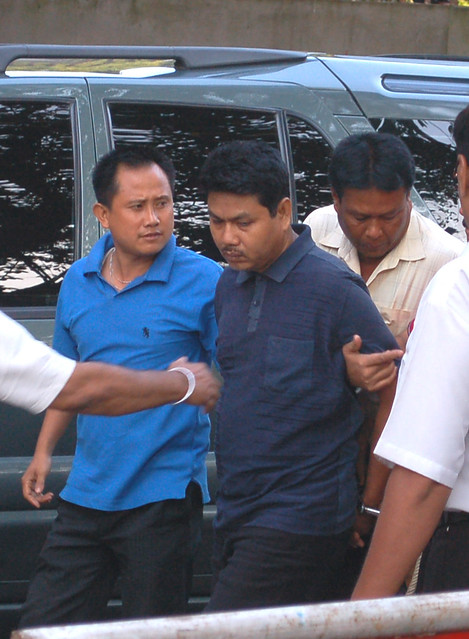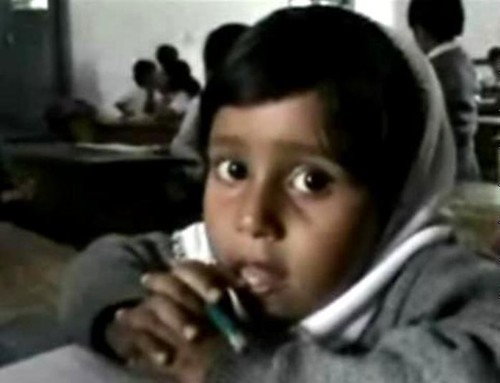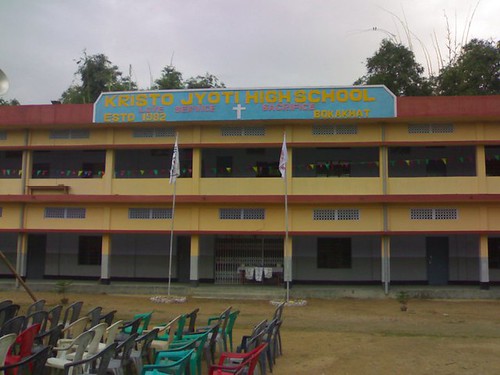By Dr. Syed Ahmed, for TwoCircles.net,
Imphal: Manipuris paid rich tributes to the heroes of Manipur who laid down their lives for the cause of safeguarding the sovereignty and independence of their motherland while fighting against the British forces in the last and decisive Anglo-Manipur War of 1891 on the occasion of Khongjom Day on April 23.
The official function was observed at Khongjom War Memorial at Kheba-ching in Khongjom village of Thoubal district. Governor of Manipur Gurbachan Jagat, Chief Minister O. Ibobi Singh, Ministers, MLAs and other dignitaries of the State paid floral tribute to the martyrs at War Memorial and at the statue of Paona Brajabashi, the Major General who led the Manipuri forces at the last and most momentous battle fought against the British forces at Khongjom from April 23-25, 1891. Tarpon (offerings for the deceased) was also offered at the Khongjom River. A contingent of Manipur Rifles also gave Guard of Honour and General Gun Salute as a mark of respect to the brave heroes.
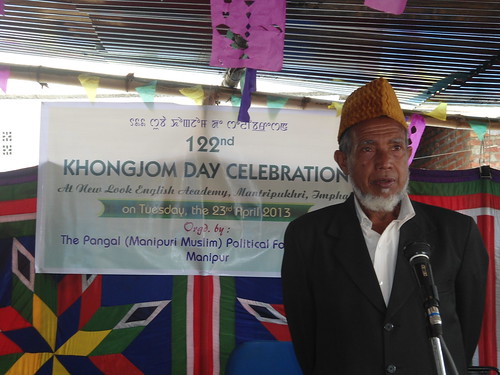
The function organised by Pangal Political Forum
Addressing the function, Governor Gurbachan Jagat said that the Battle of Khongjom was an illustrious chapter in the long history of the freedom struggle of the entire country. The day reminds us of the patriotism, sacrifice and unflinching courage of the people of Manipur who withstood against the mighty British to safeguard the freedom of Manipur in 1891. He also appealed to the present generation to rededicate themselves to the cause of the motherland, while paying homage and tribute to those who laid down their lives for the cause of their motherland, so that it can be in the forefront of the comity of nations. Chief Minister O. Ibobi said that freedom was not a gift from the British Empire but won by our freedom fighters after giving lots of sacrifice.
Khongjom Day was also observed by various civil organizations in different parts of the State. Muslims in the State too remembered those Muslim soldiers who participated in the Khongjom War. The Pangal (Manipuri Muslim) Political Forum (PPF) organized a grand function at New Look English Academy, Mantripukhri on April 23 and paid tribute to those valiant Muslims who fought in the Khongjom war. The function organized was attended by A.R. Khan (Retd. IAS), Retd. Chief Engineer and Working President of PPF Azizul Haque Khan, Social Worker Okram Henry Singh, Spokesperson of PPF M.I.Khan, Retd. Chief Engineer and President of PPF A.R. Shah, Social Activist Sitara Begum, Associate Professor A. Hakim Shah Khullakpam, students, civil society organization members and community leaders. Floral tributes were paid to the Muslims who fought in the Khongjom War.
Speakers at the function paid their respect to those Muslims who fought in the Khongjom war. Addressing the gathering, M.I. Khan said in 1891 the British tried to subdue and snatch the independence of Manipuris. The different communities came together to face the challenge. They all fought under the leadership of Paona Brajabashi. The Muslims too took part in the historic battle fought at Khongjom between the Manipuri and British forces to safeguard the independence and sovereignty of Manipur. So far we have gathered from the literatures the name of 32 Muslims who took part in the Khongjom war. We are proud to learn that that our forefathers took part in such a historic battle. We are all the more happy to know that the small Muslim community had given a praiseworthy contribution in the war. Today’s historians need to acknowledge the contributions of the Muslims.”
A.R. Khan said we fail to acknowledge those Manipuri Muslims and Hill Tribes who took part in the Khonjom War. It is time that we do the research to identify those Muslims and Hill tribes who fought in the war. Their role should also find a place in the history of the Khongjom War. It should be taught in our school syllabus, he added.
Later a drama of Khongjom war was staged by students.
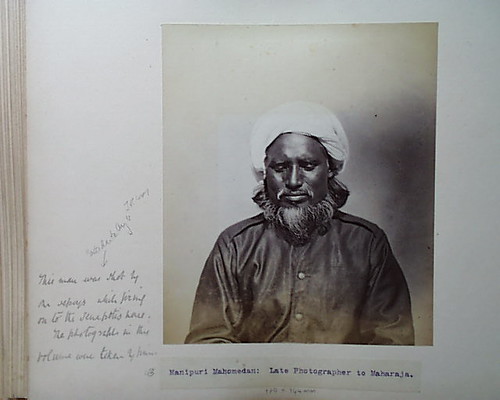
A rare photograph of Dasu Sardar
The names of those Manipuri Muslims who participated in the Anglo-Manipur War of 1891 are: 1. Babu alias Sandrokpa (of the clan/lineage Ipham) from Kairang, 2. Singa Dewan alias Khomyan Chaoba (Singamayum) of Kairang Khabeisoi, 3. Niyamatullah (Ipham) of Khetri Awang Leikei, 4. Moni Amandar (Ipham) of Khetri Awang Leikei, 5. Hamoon, younger brother of Moni Amandar, 6. Naokon Tomba (Ipham) of Khetri Bengoon, 7. Khamba alias Irong Taba (Ipham) of Keirao Makting, 8. Konsali Lallup Chingba alias Phingang Setpa (Ipham) of Keirao Makting, 9. Ajijur Rahman alias Shamu, son of Konsali Lallup of Keirao Makting, 10. Khema (Ipham) of Keirao Makting, 11. Chaodonpa from Kiyamgei, 12. Sanaola Haji alias Keikhumacha Haji (Nongjeimayum) of Keikhu, 13. Sher Shah alias Chibando Koot (Makakmayum) of Lilong Leihaokhong, 14. Koya Shah (Makakmayum) of Lilong, 15. Yusuf Ali, younger brother of Chibando Koot, of Lilong Leihoakhong, 16. Khela Koot (Makakmayum) of Lilong, 17. Tonjao (Yumkheibam) of Lilong, 18. Angou Lamboiba Havildar (Makakmayum) of Lilong, 19. Tolando Subehdar (Buyamayum) of Lilong Khong, 20. Pheira Jamadar (Thongkhongmayum) of Haoreibi Awang Leikai, 21. Sangai Subehdar (Makakmayum) of Lilong Haoreibi, 22. Joy Jatra (Makakmayum) of Haoreibi Leihaokhong, 23. Angou, younger brother of Joy Jatra, 24. Melei (Singgamayum), a bugler, of Haoreibi Chingkham, 25. Abdul Karim (Merai), bugler, of Lilong, 26. Asghar Ali alias Rupo Ali Mia (Phundreimayum) of Sangaiyumfam, 27. Rahamatullah alias Oraoba (Makakmayum) of Yairipok Tulihal, 28. Uno Nongshaiba (Nongshaimayum) of Yairipok Tulihal, 29. Haji Abungton (Khullakpam) of Yairipok Tulihal, 30. Sadhu (Makak Angouba) of Yairipok, 31. Yusuf Ali alias Kena (Makakmayum) of Yairipok Ningthounei. Except a few, all these Muslims took part in the battle at Khongjom. [See M.A. Janab, “Muslim Fighters in the war of 1891,” in Ch. Manihar Singh’s 100 years of Manipur's Last War of Independence, 1991]
Many Muslim inhabited areas suffered the attacks and atrocities of the British. Britishers had burned down many of the villages in and around the Kangla Fort at Imphal, which housed the royal palace, on March 24, 1891 during their attempt to arrest Tikendrajit, the Senapati of the King Kulachandra (1890-1891).
Dasu Sardar, a Muslim photographer of the royal court and a close associate of King Kulachandra and Tikendrajit, was brutally killed along with his two daughters on the night of March 24. It is recorded [in A. Hakim Shah Khullakpam’s The Manipur Governance to the Meitei-Pangal 1606-1949, 2008] that seven sepoys of the British crossed Minuthong Bridge and entered the house of Dasu Sardar. The sepoys killed Dasu Sardar and his daughters brutally. The wife of Dasu Sardar survived with injuries in the leg. Many other houses in the locality were burnt down.
Dasu Sardar was originally from Banaras in UP. He was an influential man in the royal court as he was fluent in English, Bengali and other northern Indian languages. He served as Royal Photographer during the reigns of King Surchandra Singh (1886-1890) and his successor King Kulachandra Singh. During the reign of King Surchandra, Dasu Sardar served as Diwan Accountant Officer. For his service he was given cultivable land at Thoubal Khekman, which came to be known as Diwan Loukon. He married a Manipuri Muslim from Thoubal Moijing. Later Dasu Sardar became popular as the royal photographer. Even the British officials took his help whenever they want to photograph anything important.
For his service King Surchandra had settled Dasu Sardar by offering land near Minuthong Bridge, which came to be known as Mana Ingkhol (meaning awarded land). Later Dasu Sardar served under King Kulachandra.
